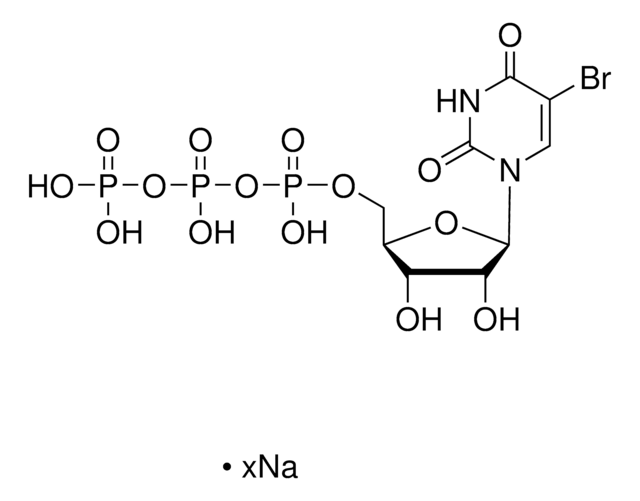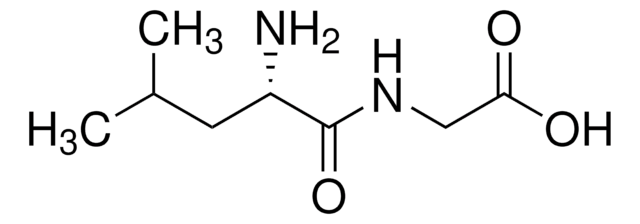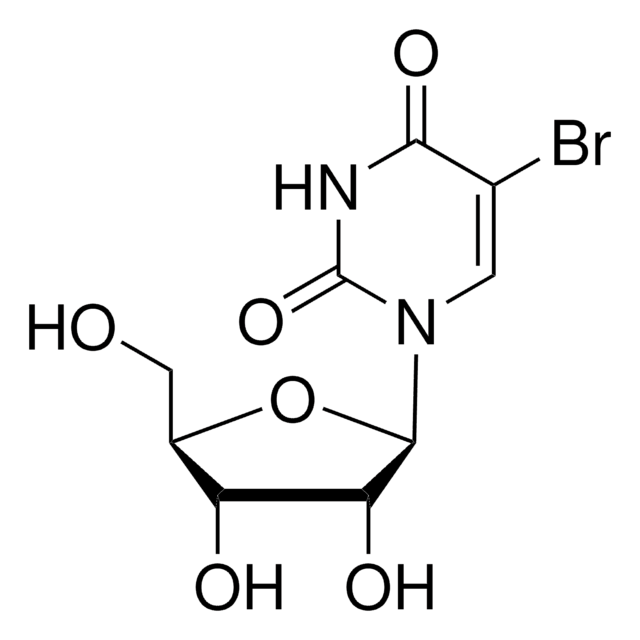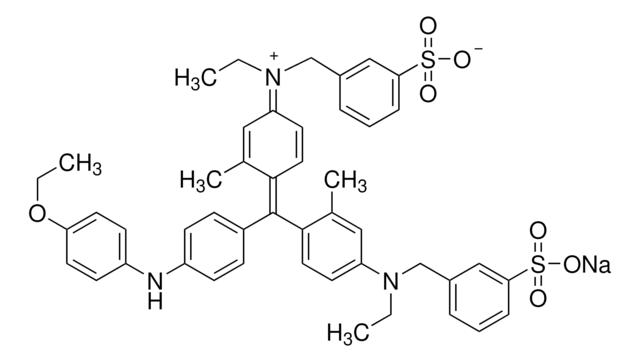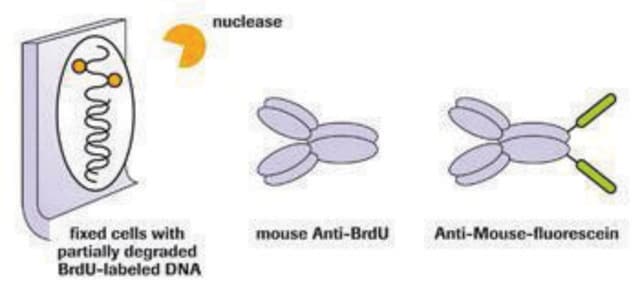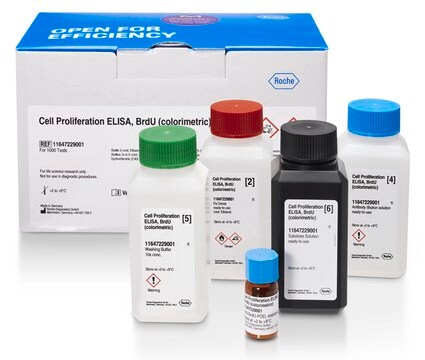B0631
5-Bromo-2′-deoxyuridine 5′-triphosphate sodium salt
≥90%
Synonym(s):
5-BrdUTP
About This Item
Recommended Products
biological source
synthetic (organic)
Quality Level
Assay
≥90%
form
powder
solubility
water: 50 mg/mL, clear, colorless to faintly yellow
storage temp.
−20°C
SMILES string
[Na].OC1CC(OC1COP(O)(=O)OP(O)(=O)OP(O)(O)=O)N2C=C(Br)C(=O)NC2=O
InChI
1S/C9H14BrN2O14P3.Na.H/c10-4-2-12(9(15)11-8(4)14)7-1-5(13)6(24-7)3-23-28(19,20)26-29(21,22)25-27(16,17)18;;/h2,5-7,13H,1,3H2,(H,19,20)(H,21,22)(H,11,14,15)(H2,16,17,18);;
InChI key
UWZGQOWZUSBZMC-UHFFFAOYSA-N
Related Categories
General description
Application
- in the labelling of 3′-OH termini of fragmented DNA with double stranded breaks in african green monkey kidney cells
- to label cleaved DNA ends in apoptosis assay in avian tissue sections
- for incorporation into mice prostates for immunohistochemistry studies
Storage Class Code
11 - Combustible Solids
WGK
WGK 3
Personal Protective Equipment
Certificates of Analysis (COA)
Search for Certificates of Analysis (COA) by entering the products Lot/Batch Number. Lot and Batch Numbers can be found on a product’s label following the words ‘Lot’ or ‘Batch’.
Already Own This Product?
Find documentation for the products that you have recently purchased in the Document Library.
Customers Also Viewed
Our team of scientists has experience in all areas of research including Life Science, Material Science, Chemical Synthesis, Chromatography, Analytical and many others.
Contact Technical Service
